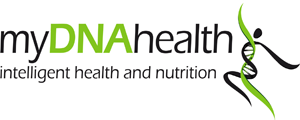What do we know about obesity and genomics?
In this article, Dr Eve Pearce, myDNAhealth’s scientific officer, explains the genetic differences between people in the development of obesity.
The COVID-19 pandemic is presenting unprecedented challenges globally. Recent reports have suggested that obesity is one of the underlying health conditions that can cause a more severe reaction to COVID-19 infection. This is significant given that the majority of adults in England are overweight or obese, and indeed worldwide, around 1.9 billion adults are living with overweight and obesity. Given these extremely high rates of obesity around the globe, it is possible the pandemic could disproportionately impact those who are overweight or obese.
Obesity headlines
Research has estimated that the genetic differences between people in the development of obesity range from 40 to 70%. Despite understanding that genetic factors play such a significant impact, the identification of specific genes associated with obesity traits is still ongoing. As we have seen, the Human Genome Project has provided us with a wealth of information and spawned the omics era. Instead of answering questions regarding our metabolism, it created many new research areas.
Understanding obesity has required application between all levels of these research platforms. To identify associated genes research has had to progress in upstream areas such as epigenomic change, gene expression and metabolism. This includes looking at related changes such as increased adipose tissue and to appetite.
Advances in high-throughput genotyping technologies have significantly contributed to the identification of Obesity-Related Genes. Genome-wide association studies (GWAS) have identified regions of the human genome which correlated to obesity, known as obesity-susceptibility loci. Today over 75 such regions of the genome have been classified.
FTO discovery
In 2007 two research groups independently identified the first established obesity susceptibility gene via GWAS. Designated as FTO gene (fat mass and obesity-associated gene) FTO is still thought to have the most significant impact on body mass index (BMI) and risk of obesity. Further development of this research has established that the association of FTO and type 2 diabetes works through FTO’s effect on BMI and appetite control. FTO is flanked by RPGRIPL1 a gene encoding a photoreceptor protein with roles in the eye and IRX3 a gene involved in embryonic neural development.
Unravelling FTO function
So what do we know? While FTO expression is widely expressed in most tissue types, high expression levels have been found in the hypothalamus, specifically the arcuate nucleus (human and mouse). In 2010 a study by Tung et al., showed overexpression of FTO decreased food intake while removal of the gene increased food intake in mouse models.
Analysis of FTO protein structure has been performed in the hope of yielding further clues. It revealed an ability of FTO to demethylate single-stranded nucleic acids such as messenger RNA and therefore may have roles in RNA processing and gene expression. This may influence appetite control through the levels of essential amino acids detected by the hypothalamus. In mice, fasting resulted in a decrease in FTO levels, while a 10-day high-calorie diet increased them. If we align this against our understanding of FTO expression in the hypothalamus, this makes some sense. Overfed will signal increased FTO leading to a natural reduction in appetite and vice versa. Specifically, it was found that a lack of essential amino acids (and, to a lesser extent, glucose) is responsible for decreased FTO levels, thought to be regulated by transcriptional changes.
Decreased FTO levels in mouse cells in vitro lead to decreased activation of a cell growth pathway mTORC1 a part of mTOR signalling in the hypothalamus. Reducing mTORC1 function triggers less gene expression and more apoptosis (programmed cell death). FTO’s catalytic function as a demethylase is thought to be required to sustain proper mTORC1 functioning. This mechanism indicates that the presence of essential amino acids alters FTO levels by changes to proliferation (mRNA translation) and programmed cell death (apoptosis).
FTO and appetite
The association between the FTO SNP tested by myDNAhealth and increased BMI is substantially driven by affecting an individual’s energy intake. Specifically it has been shown that the SNP influences appetite, as individuals tend to consume more food and more energy in total combined without changes to energy expenditure.
The link between eating behaviour, the FTO SNPs, and mTOR signalling in the hypothalamus has not been explicitly established, but we can see how they could be related. Given the relatively modest effects of the risk allele in humans (homozygous carriers are up to 3kg heavier on average), there may be subtle effects of the SNPs on FTO expression in the hypothalamus. These effects could modify how FTO responds to essential amino acids or alter demethylase activity, causing downstream changes in mTOR signalling and thus altering a person’s eating behaviour.
The mechanism is mostly a hypothesis, a possible explanation or part explanation given all the facts and further studies are required. Another study has compared healthy weight individuals divided into groups based on their genotype at RS9939609. Compared to TT subjects, after a test meal, the AA groups reported having higher ghrelin levels (the hunger hormone) and less suppression of hunger signals.
On a more positive note, the effect of this FTO SNP on weight loss after dietary and physical activity, has found that the A variant carriers respond well to these lifestyle interventions and that exercise had a positive influence. In other words, it is not more difficult for the carriers of the SNP to lose weight compared to non-carriers and exercise may be beneficial.
The prevalence of FTO variation in population and ethnic groups
The incidence of FTO intronic 1 SNPs and the impact of its risk alleles differ depending on the population and ethnic group. FTO rs9939609 is highly prevalent in the European population, with the frequency of a risk allele A at close to 60%. FTO risk allele continue to be identified in populations across the globe including East and South Asians where the prevalence of the A alleles is 20% to 30%.
Personalised nutrition approach
 Research has begun looking into FTO rs9939609 genotype alongside anthropometric measurements, dietary intake and activity levels. A 2009 study revealed that double A carriers were characterised by 1.7 kg higher body weight and they rarely undertook physical activity. Dietary information showed this group had significantly lower energetic value and was higher in total fat and lower in total carbohydrate compared to carriers of TT genotype. Furthermore, AA variant carriers had higher obesity susceptibility, when consuming more fat and less carbohydrates. Their BMI value, while consuming high-fat and low-carbohydrate diet, was statistically higher compared to group with TT genotype, being on the same diet.
Research has begun looking into FTO rs9939609 genotype alongside anthropometric measurements, dietary intake and activity levels. A 2009 study revealed that double A carriers were characterised by 1.7 kg higher body weight and they rarely undertook physical activity. Dietary information showed this group had significantly lower energetic value and was higher in total fat and lower in total carbohydrate compared to carriers of TT genotype. Furthermore, AA variant carriers had higher obesity susceptibility, when consuming more fat and less carbohydrates. Their BMI value, while consuming high-fat and low-carbohydrate diet, was statistically higher compared to group with TT genotype, being on the same diet.
Reviews of weight-loss trials show that compared to wild type TT genotype, the homozygous FTO AA genotype is associated with more significant weight loss induced by diet and lifestyle interventions. Further understanding shows that high-fat diets, as well as diets low in carbohydrates and physical activity levels, may accentuate the susceptibility to obesity by the FTO variant. The composition of dietary fat, also appears to be important with higher dietary Saturated fat intake and a low dietary polyunsaturated fat intake increasing the risk of having a BMI ≥ 25 and being abdominally obese.
On a positive note, it has been shown that diets high in fibre and Mediterranean in nature are correlated as being advantageous for risk A allele carriers for weight loss and appetite regulation.
This article demonstrates that nutritional genomics may already have worked out what diet is best for the individual. Instead of reaching for a one-size-fits-all diet or the latest fat diet, people should follow one that is tailored to their individual needs.
There is an online learning programme available to learn more about nutritional genomics.



